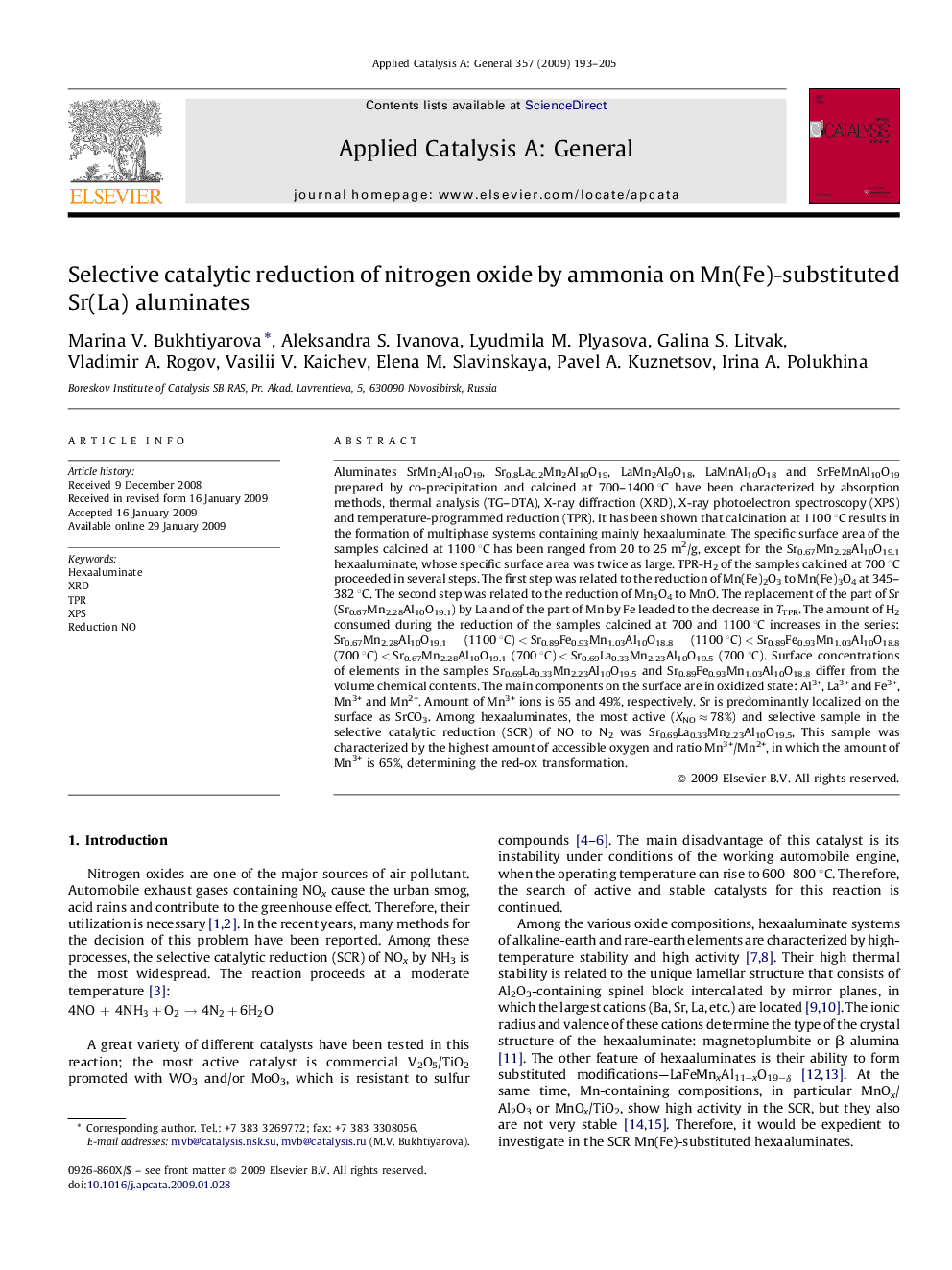| Article ID | Journal | Published Year | Pages | File Type |
|---|---|---|---|---|
| 42789 | Applied Catalysis A: General | 2009 | 13 Pages |
Aluminates SrMn2Al10O19, Sr0.8La0.2Mn2Al10O19, LaMn2Al9O18, LaMnAl10O18 and SrFeMnAl10O19 prepared by co-precipitation and calcined at 700–1400 °C have been characterized by absorption methods, thermal analysis (TG–DTA), X-ray diffraction (XRD), X-ray photoelectron spectroscopy (XPS) and temperature-programmed reduction (TPR). It has been shown that calcination at 1100 °C results in the formation of multiphase systems containing mainly hexaaluminate. The specific surface area of the samples calcined at 1100 °C has been ranged from 20 to 25 m2/g, except for the Sr0.67Mn2.28Al10O19.1 hexaaluminate, whose specific surface area was twice as large. TPR-H2 of the samples calcined at 700 °C proceeded in several steps. The first step was related to the reduction of Mn(Fe)2O3 to Mn(Fe)3O4 at 345–382 °C. The second step was related to the reduction of Mn3O4 to MnO. The replacement of the part of Sr (Sr0.67Mn2.28Al10O19.1) by La and of the part of Mn by Fe leaded to the decrease in TTPR. The amount of H2 consumed during the reduction of the samples calcined at 700 and 1100 °C increases in the series: Sr0.67Mn2.28Al10O19.1 (1100 °C) < Sr0.89Fe0.93Mn1.03Al10O18.8 (1100 °C) < Sr0.89Fe0.93Mn1.03Al10O18.8 (700 °C) < Sr0.67Mn2.28Al10O19.1 (700 °C) < Sr0.69La0.33Mn2.23Al10O19.5 (700 °C). Surface concentrations of elements in the samples Sr0.69La0.33Mn2.23Al10O19.5 and Sr0.89Fe0.93Mn1.03Al10O18.8 differ from the volume chemical contents. The main components on the surface are in oxidized state: Al3+, La3+ and Fe3+, Mn3+ and Mn2+. Amount of Mn3+ ions is 65 and 49%, respectively. Sr is predominantly localized on the surface as SrCO3. Among hexaaluminates, the most active (XNO ≈ 78%) and selective sample in the selective catalytic reduction (SCR) of NO to N2 was Sr0.69La0.33Mn2.23Al10O19.5, This sample was characterized by the highest amount of accessible oxygen and ratio Mn3+/Mn2+, in which the amount of Mn3+ is 65%, determining the red-ox transformation.
Graphical abstractHexaaluminates prepared by co-precipitation and calcined at 700–1400 °C were characterized by absorption methods, thermal analysis (TA and DTG), X-ray diffraction (XRD) and temperature-programmed reduction (TPR). Among hexaaluminates, the most active (XNO ≈ 78%) and selective sample in the selective catalytic reduction (SCR) of NO to N2 was Sr0.69La0.33Mn2.23Al10O19.5. This sample was characterized by the highest amount of accessible oxygen and ratio Mn3+/Mn2+, in which the amount of Mn3+ is 65%, determining the red-ox transformation.Figure optionsDownload full-size imageDownload as PowerPoint slide
